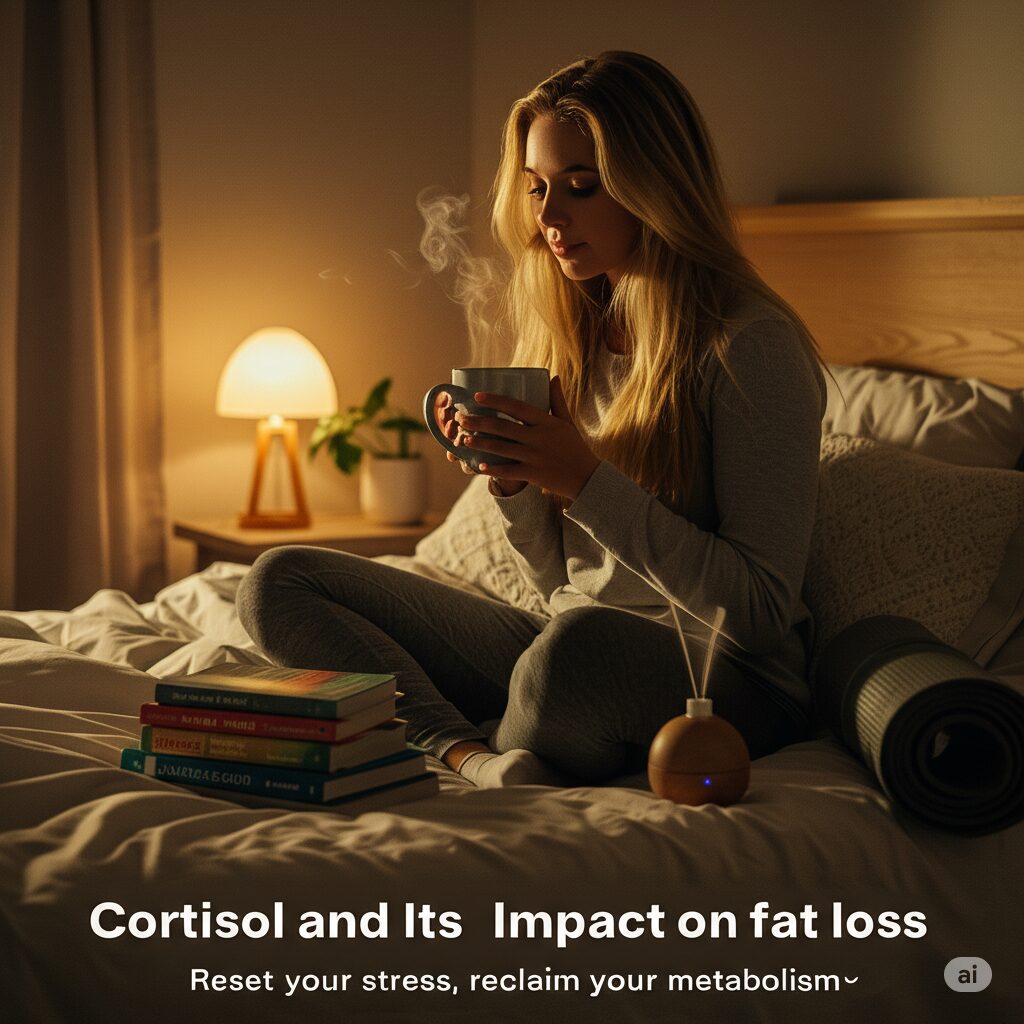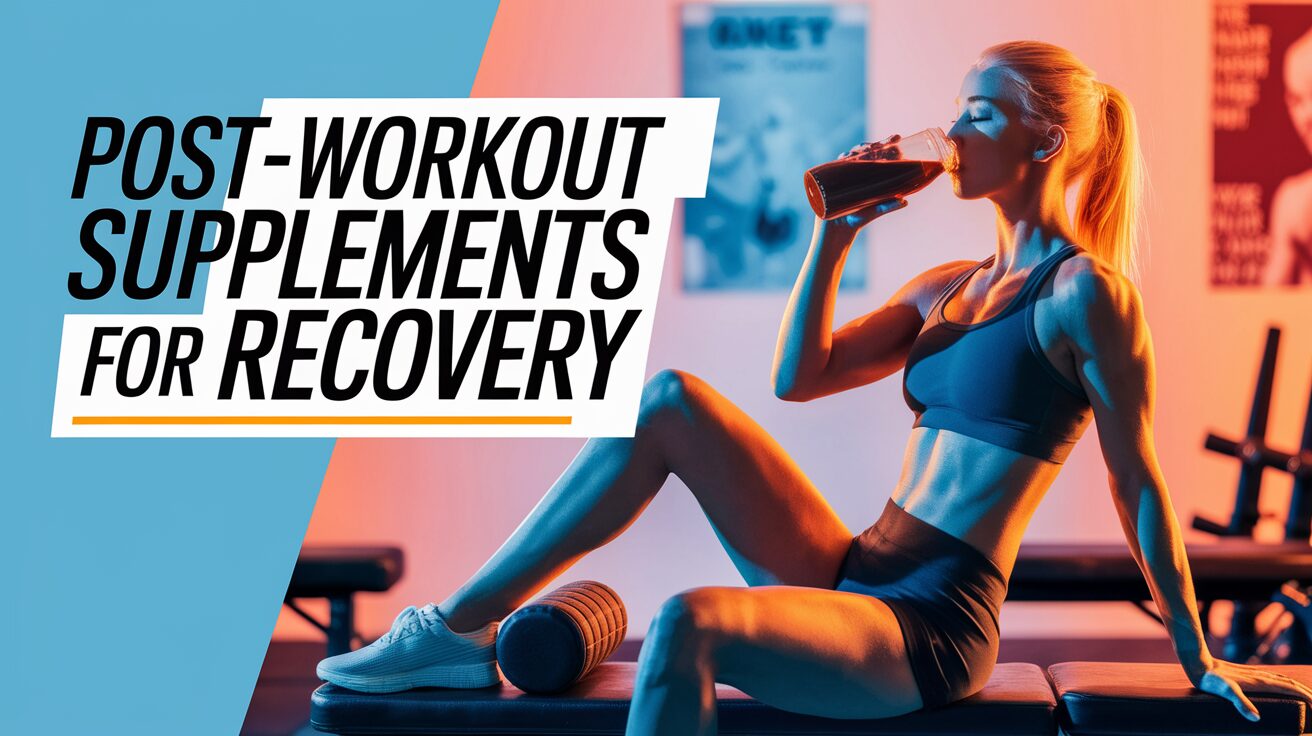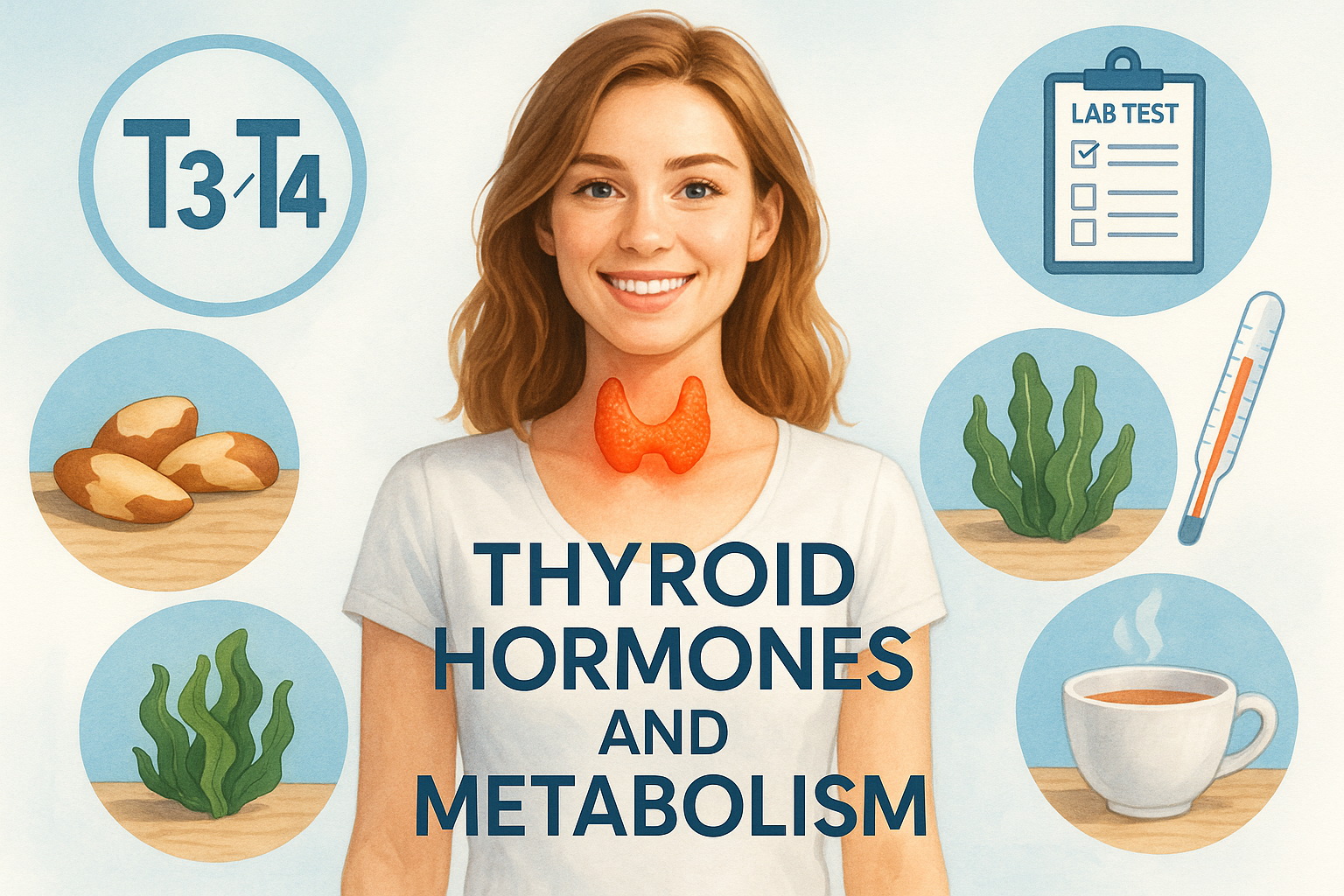
Thyroid Hormones and Metabolism
Your thyroid burns more calories while you’re lounging than a 3-hour Netflix marathon. Surprised? This tiny gland works like your body’s thermostat, fine-tuning energy production and heat levels. When it’s off, things get weird—like gaining weight despite eating salads or losing pounds while craving pizza nightly.
Think of your thyroid hormones as an orchestra conductor. If they’re out of sync, your whole body hits wrong notes—from icy fingers to a heart that races like it’s late for a meeting. And here’s the kicker: 1 in 8 women will face thyroid issues, often brushed off as “just stress.”
Whether it’s weight management woes or feeling like a human furnace (or popsicle), understanding this tiny powerhouse is key. Let’s unpack how it keeps your rhythm smooth—or throws it into chaos.
Understanding Thyroid Hormones and Their Role in the Body
Your body’s energy factory runs on two types of fuel—one for storage, one for instant power. The thyroid gland produces mostly T4 (think: backup battery) and a dash of T3 (like an energy shot). When hormone levels dip, your pituitary gland sends TSH signals—picture a boss texting “WHERE’S THE REPORT?!” at 2 AM.
What Are Thyroid Hormones?
T4 is your body’s slow burn—it hangs around until converted to T3, the active form. Alcohol or liver issues can jam this process. Fun fact: Your thyroid stocks a 3-week supply. That’s why symptoms creep up like a Netflix subscription fee.
How the Thyroid Gland Functions
This butterfly-shaped gland works 24/7. It’s 95% T4 production, with T3 as the VIP guest. Need proof it’s multitasking? It tweaks everything from your eyebrow thickness to how often you hit the bathroom.
| Hormone | Role | Like… |
|---|---|---|
| T4 | Storage form | A full pantry |
| T3 | Active form | Breakfast espresso |
| TSH | Pituitary’s alert system | Overbearing alarm clock |
The Pituitary Gland’s Role in Thyroid Regulation
When T4 drops below 0.7-1.9ng/dL, the pituitary gland floods your system with TSH. Some meds (lithium, soy supplements) can hijack this chatty feedback loop. Pro tip: If you’re always cold or tired, TSH might be screaming into the void.
How Thyroid Hormones Influence Metabolism
Ever felt like a furnace on overdrive or a sloth in slow motion? Blame your metabolism’s puppet master. This tiny gland tweaks your calorie burn so precisely that 1mcg of medication can torch 25 extra calories daily. But when things go rogue, you’ll know—like that woman who hit 107°F body temp and wound up in the ER.
The Connection Between Thyroid Hormones and Energy Production
Hyperthyroidism turns your metabolism into a hummingbird’s—think double the resting energy output and a heart rate that mimics a caffeine binge. Hypothyroidism? More like a sloth on sedatives. Gut motility slows, and even your pinky toenails might bail (yes, really).

- 5 sneaky signs of a sluggish metabolism: Chapped lips, always cold in AC, lost toenails, constipation, and a voice hoarser than a late-night DJ.
- Myth busted: Popping extra thyroid meds won’t magically melt pounds—it’s like flooding a car engine and expecting better mileage.
Thyroid Hormones and Weight Management
Here’s the irony: Thyroid patients often feel coldest in AC but sweat through winter coats. Why? Weight management gets hijacked—either from a metabolic rate stuck in first gear or one stuck on turbo. The fix? Balance, not extremes.
Signs of Thyroid Hormone Imbalance
Your body’s thermostat might be broken if you’re sweating in a snowstorm or shivering in July. When hormones go haywire, they send weird signals—like a GPS stuck on “rerouting.” Here’s how to spot the chaos.
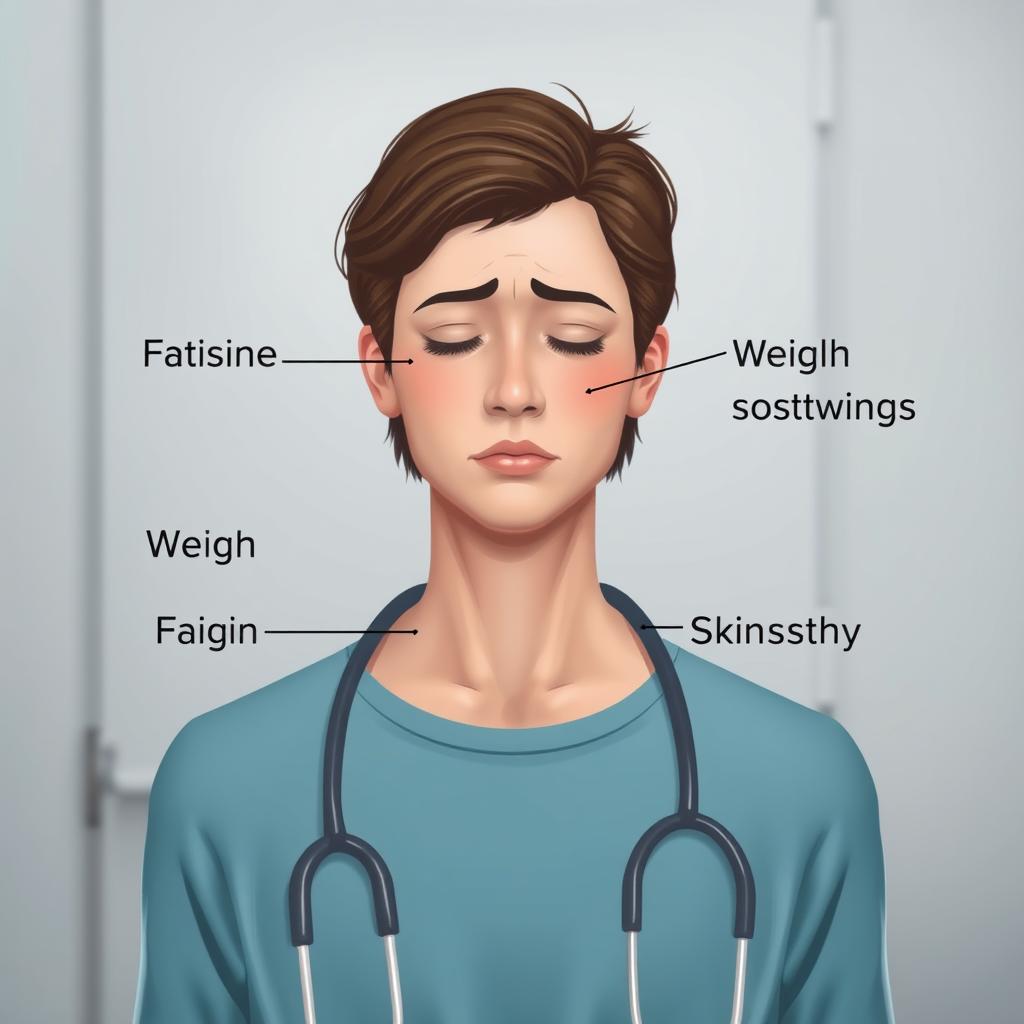
Hypothyroidism: The Sloth Mode
Feeling like you’re moving through molasses? Hypothyroidism slows everything down. 60% of patients report brain fog so thick they forget why they walked into a room.
- 10 Signs You Might Be Part Sloth: Dry skin, eyebrow gaps, a voice deeper than a country singer’s, and naps that last longer than a work meeting.
- Poop Report: Rabbit pellets (💩) or constipation that outlasts a Netflix binge.
Hyperthyroidism: The Energizer Bunny
Hyperthyroidism flips the script. Your heart races like it’s late for a flight, and weight loss happens even if you eat like a teenager. Fun fact: It spikes atrial fibrillation risk by 300%.
- Emergency Red Flags: Fever over 100°F, confusion, or a heartbeat that sounds like a drum solo—ER stat.
- Neck Check: Shine your phone flashlight under your Adam’s apple. A bulge (goiter) means trouble.
Pro tip: 50% of cases get missed at first. If your doctor blames “stress,” ask for a TSH test. Your metabolism isn’t lazy—it’s just misunderstood.
Thyroid Hormone Testing: What You Need to Know
Lab results can lie—especially when your hair vitamins mess with the numbers. Thyroid blood tests are like a car’s diagnostic scan, but not all mechanics read them right. Labs often flag TSH as “normal” up to 5.0, while optimal energy levels happen below 2.5. That’s like calling a 90°F room “comfortable” because it’s not boiling.

The TSH Test: A Key Diagnostic Tool
Your TSH test is the thermostat’s low-battery alert. Below 0.5? Your engine’s overheating. Above 2.5? You’re running on fumes. Pro tip: Biotin supplements (common in hair gummies) can fake a “great” TSH result. Stop them 3 days pre-test unless you want a false all-clear.
- 7 Testing Must-Asks:
- Was it done before 10 AM? (Levels drop like your energy post-lunch)
- Did you fast? (Coffee creams can skew results)
- Are you pregnant? (TSH targets shrink in the first trimester)
Understanding T4 and T3 Tests
T4 is your backup generator—plentiful but weak. T3 is the active spark. Most thyroid blood tests check TSH and T4, but misfires happen. Example: A woman kept getting “normal” results until someone tested T3—turns out her liver wasn’t converting T4 properly.
| Test | What It Reveals | Red Flags |
|---|---|---|
| TSH | Pituitary’s distress signals | Over 2.5 = sluggish |
| Free T4 | Unused fuel reserves | Low = conversion issue |
| Free T3 | Active energy output | Low despite normal T4 |
When to Get Tested
Feeling colder than a penguin’s toenails? Or sweating through sweaters? Time for tests. Track your morning temps too—if they’re below 97.8°F with high TSH, your normal thyroid results might be lying. Remember: Labs aren’t always right. Listen to your inner sloth or hummingbird.
Common Thyroid Disorders and Their Impact
Autoimmune disorders turn your thyroid into a battleground—and you’re caught in the crossfire. Whether it’s your immune system attacking the gland (Hashimoto’s) or revving it into overdrive (Graves’ disease), the fallout hits everything from your energy to your heartbeat. Even pregnancy can leave behind cellular “souvenirs” that trigger chaos.

Hypothyroidism: The Silent Saboteur
Hashimoto’s causes 90% of underactive thyroid cases—like your body forgot to pay the metabolism bill. Symptoms creep in slow: dry skin, brain fog, and constipation that outlasts a season finale. Fun fact: Gluten or dental X-rays might trigger this friendly fire.
Hyperthyroidism: The Overachiever’s Curse
Graves’ disease flips the script. Your thyroid pumps out hormones like a caffeine-fueled barista, leading to weight loss, shaky hands, and a heartbeat that mimics a drum solo. Unlike Hashimoto’s, this is a mutiny—your immune system overstimulates the gland.
| Disorder | Causes | Key Symptoms |
|---|---|---|
| Hashimoto’s | Autoimmune attack | Fatigue, weight gain, cold intolerance |
| Graves’ disease | Autoimmune overstimulation | Anxiety, rapid weight loss, bulging eyes |
| Postpartum thyroiditis | Baby’s leftover cells | 7% of new moms, fatigue, mood swings |
Thyroiditis: The Temporary Rebellion
Postpartum thyroiditis strikes 7% of new mothers—like a baby’s cells haunting mom’s gland. It often starts with hyperthyroidism (think: panic attacks) before swinging to hypothyroidism. One man’s thyroiditis mimicked anxiety until labs revealed the truth.
- 5 Thyroid Cancer Red Flags:
- Neck lumps that grow faster than a teenager’s appetite
- Family history of the disease
- Radiation exposure (even childhood X-rays count)
Good news? Caught early, thyroid cancer has a 98% survival rate—higher than your odds of keeping plants alive.
Treatment Options for Thyroid Hormone Imbalances
Popping a pill won’t fix your metabolism if you’re sabotaging absorption with your morning latte. Thyroid hormone replacement works—but only if you outsmart everyday traps like antacids or that “harmless” calcium gummy. Here’s how to make your meds actually work.
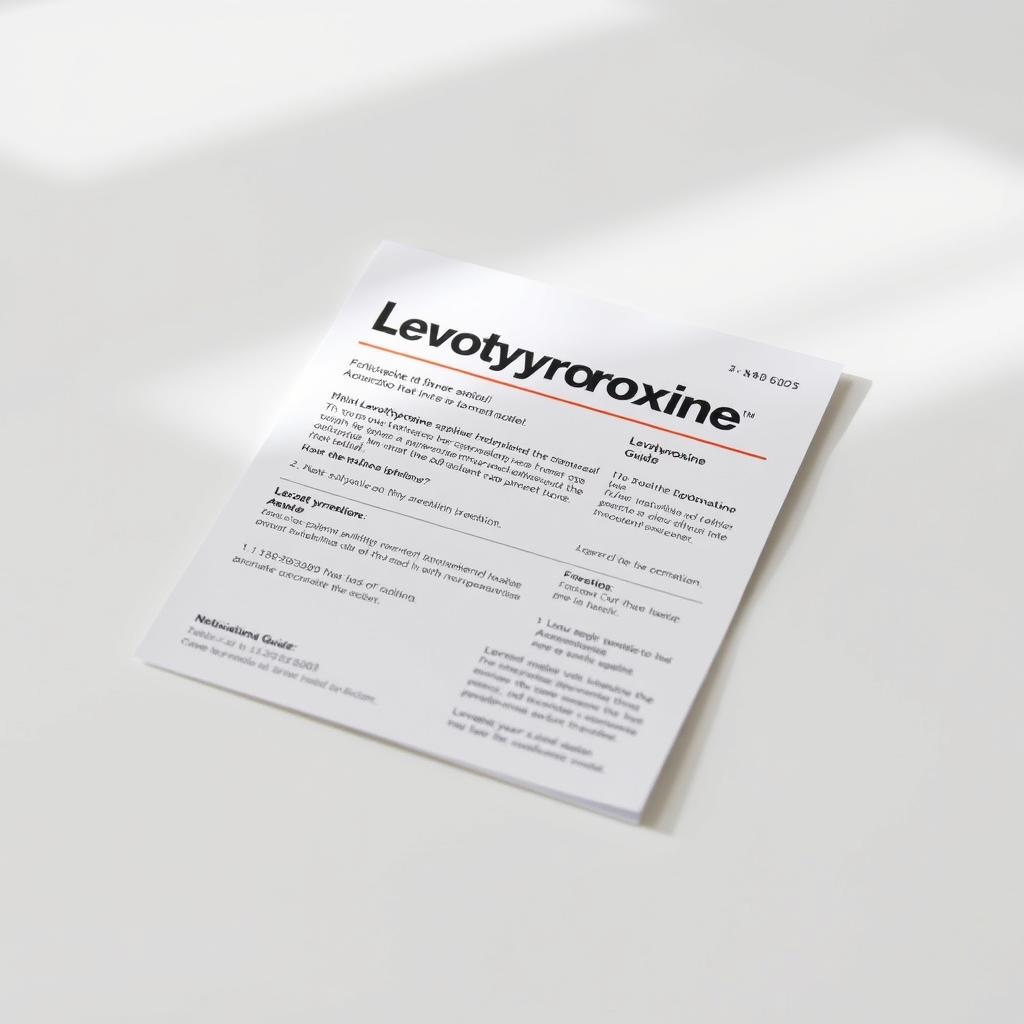
Levothyroxine and Other Medications
30% of patients insist brand-name levothyroxine (Synthroid) works better than generics. Science says maybe—fillers can vary, and some bodies notice. Other options like Armour Thyroid use animal-derived hormones, but they’re like ordering a mystery burger: unpredictable dosing.
- 5 Absorption Saboteurs:
- Coffee within 1 hour (40% less absorption)
- Calcium supplements (bye-bye, T4)
- Chia seeds (yes, really—they gel up your gut)
How to Take Thyroid Hormone Replacement
Set a phone alarm labeled “Thyroid O’Clock” for 30 minutes before breakfast. Empty stomach means empty—no creamer, no prenatal vitamins. Pro tip: Night owls can take it at 3 AM if they’re consistent. Your gut doesn’t care about the clock.
How to Annoy Your Endocrinologist in 3 Steps:
- Take meds with a kale smoothie (iron blocks absorption)
- Skip labs because “I feel fine” (spoiler: you won’t)
- Adjust your own dose (cue the eye-roll)
Monitoring Your Thyroid Levels
TSH levels should stay below 2.5 for optimal energy—but labs often call 4.0 “normal.” Pregnancy? Aim for under 2.5 mIU/L to avoid risks. Test before 10 AM for accuracy, and ditch biotin supplements 3 days prior (they fake great results).
| Test Timing | Why It Matters |
|---|---|
| Morning fasted | Food skews results |
| Same lab each time | Equipment varies |
7 Signs Your Dose Needs Adjusting: Morning temps below 97.8°F, eyebrow gaps returning, or sudden love for naps. Listen to your inner sloth—it’s usually right.
Lifestyle and Thyroid Health
Your kitchen holds more power over your metabolism than your gym membership. What you eat—and when—can either fuel your body’s engine or clog it like bad gasoline. Even your stress levels and sleep patterns play backup singers to this tiny gland’s lead vocals.

Diet and Nutrition for Thyroid Support
Forget fad detoxes. Your gland craves real food:
- Brazil nuts: One nut = 400% of your daily selenium (a key defender against oxidative stress).
- Seaweed snacks: Packed with iodine, but don’t go overboard—too much backfires.
- Cooked cruciferous veggies: Raw broccoli’s rep is overblown. Steaming deactivates the goitrogens.
Meal timing trick: Wait 1 hour after meds to eat. Breakfast too soon? It’s like flushing pills with coffee (which, by the way, also blocks absorption).
The Role of Stress and Sleep
Chronic stress doesn’t just wreck your sanity—it flips a metabolic switch. Cortisol spikes create “reverse T3,” a hormone that slams the brakes on energy conversion. Translation: You’re exhausted even with “normal” lab results.
Sleep hack: Thyroid patients often battle insomnia. Try:
- Blackout curtains (light messes with your gland’s internal clock).
- No screens 90 minutes before bed—blue light mimics sunrise signals.
- Keep your bedroom at 65°F. Overheating disrupts hormone balance.
Myth busted: “Thyroid detox teas” are just expensive herb water. Your liver does the detoxing—support it with water and vitamin B.
Taking Charge of Your Thyroid Health
You wouldn’t ignore a car’s check-engine light—why ignore your thyroid disease red flags? A normal thyroid thrives on simple habits: take meds on time, skip coffee for 30 minutes, and track morning temps like a boss.
Consider yourself the CEO of your gland’s management. One patient regrew her hair just by syncing pills with meals—proof tiny tweaks win. But if you spot rapid weight swings, a neck lump, or a resting heart rate over 100, call your doctor. Stat.
“Your thyroid doesn’t define you—but understanding it empowers you.” Nail the basics, and your health will hum like a well-tuned engine.
References
1. Hollowell JG, et al. ‘Serum TSH, T(4), and thyroid antibodies in the United States population.’ J Clin Endocrinol Metab, 2002.
2. Surks MI, et al. ‘Subclinical thyroid disease: scientific review and guidelines for diagnosis and management.’ JAMA, 2004.
3. Silva JE. ‘Thermogenic mechanisms and their hormonal regulation.’ Physiol Rev, 2006.
4. Klein I, Danzi S. ‘Thyroid disease and the heart.’ Circulation, 2007.
5. Vanderpump MPJ. ‘The epidemiology of thyroid disease.’ Br Med Bull, 2011.
6. Smith TJ, Hegedüs L. ‘Graves’ Disease.’ N Engl J Med, 2016.
7. Stagnaro-Green A, et al. ‘Postpartum thyroiditis and autoimmune thyroid disease.’ Endocrinol Metab Clin North Am, 2000.
8. Davies L, Welch HG. ‘Increasing incidence of thyroid cancer in the United States, 1973-2002.’ JAMA, 2006.
9. Dong BJ. ‘Bioequivalence and interchangeability of levothyroxine products.’ JAMA, 2000.
10. Benvenga S, et al. ‘Interactions between thyroid hormones and absorption interfering agents.’ Endocrine, 2008.
11. Biondi B, Cooper DS. ‘The clinical significance of subclinical thyroid dysfunction.’ Endocr Rev, 2008.
12. Rayman MP. ‘Selenium and human health.’ Lancet, 2012.
13. Peeters RP, et al. ‘Regulation of thyroid hormone metabolism during illness and nutrition.’ Horm Res, 2005. 14. Cajochen C, et al. ‘Evening exposure to a light-emitting diodes (LED)-backlit computer
